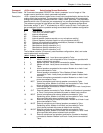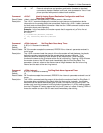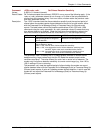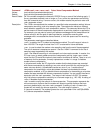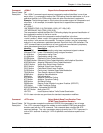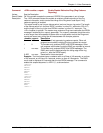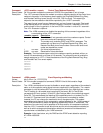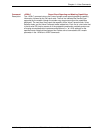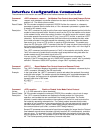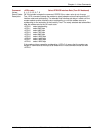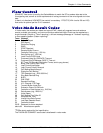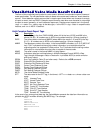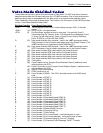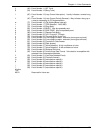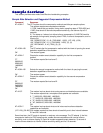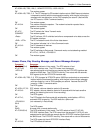
Chapter 4 – Voice Commands
Multi-Tech Systems, Inc. SocketModem MT5634SMIxx Reference Guide (S000263C) 119
Interface Configuration Commands
The commands in this section are used to define the interface between the PC and the modem.
Command: +VBT=<deassert>,<assert> Set Modem Flow Control Assert and Deassert Points
Values: <assert> and <deassert> are buffer offsets from the start of the buffer. The buffer's first
position is 0. The offset units are octets.
Result Codes: OK if the modem accepts the command; ERROR if either the <assert> or <deassert>
parameter is greater than the buffer size, or if the <de-assert> parameter is greater than
or equal to the <assert> value.
Description: The +VBT= command is used to set the flow control assert and deassert points inside the
modem's internal transmit buffer. As data is sent from the PC to the modem and is stored
in the modem's buffer, when the number of octets in the buffer equals the <assert> value,
the modem asserts flow control to the PC (e.g., turns off CTS circuits, or sends an XOFF
character). As the modem removes data from the buffer and processes the data, when
the number of octets in the buffer equals the <deassert> value, the modem de-asserts
flow control (e.g., turns on CTS circuits, or sends an XON character). The modem may
inform the PC (using the +VBT=? command) that the PC does not permit the modifying of
the flow control assert and deassert points by returning a single value, not in the range of
values, for each control point.
The +VBT= command controls the amount of "skid" in the modem's voice buffer, where
"skid" is the amount of octets that the modem could accept before losing data after the
modem asserts an off flow control signal to the PC.
You can use the +VBT= command to balance performance versus robustness. For
example, if the PC knows there are only 16450 UARTs present, a small "skid" is probably
sufficient. If there are 16550 UARTs present, a larger "skid" is probably required.
Command: +VBT=? Report Modem Flow Control Assert and Deassert Points
Description: The +VBT=? command displays the possible <assert> and <deassert> values set by the
+VBT= command, followed by the OK result code.
Example: In the lines below, the +VBT=? command is used to ask about the modem's flow control
and buffer size ranges. The modem reports the deassert point is adjustable between 20
and 100 octets, the assert point is adjustable between 150 and 180 octets, and the
transmit buffer size is 200 octets.
AT+VBT=?
(20-100) , (150-180) , (200
OK
Command: +VPP=<enable> Enable or Disable Voice Mode Packet Protocol
Values: 0, 1; (2–255 reserved for future standards)
Result Codes: OK if the modem accepts the command; ERROR if the <enable> value is out of range.
Description: The +VPP= command enables and disables the Packet protocol for Voice mode
operation, and handles the new unsolicited Voice mode result codes. The Packet
protocol is used to detect lost octets on the modem-to-PC serial link, and to recover the
lost octets by requesting retransmission. The Packet protocol assumes that the data
corruption is not a problem on the communications link, the last octet sent will never be
lost due to data overrun (i.e., that the newer octets always overwrite previous octets in
the communications input buffer, a common UART design feature).
Several PC processes can cause serial input channel neglect for longer than the Protocol
time between asynchronous characters (typically less than 521 microseconds), and data
loss can occur. If a character is lost in the received data, the playback of the voice data
may be impaired or lost. If a character is lost in the final result code, the connection may
fail. The Packet protocol permits recovery from such data loss.



